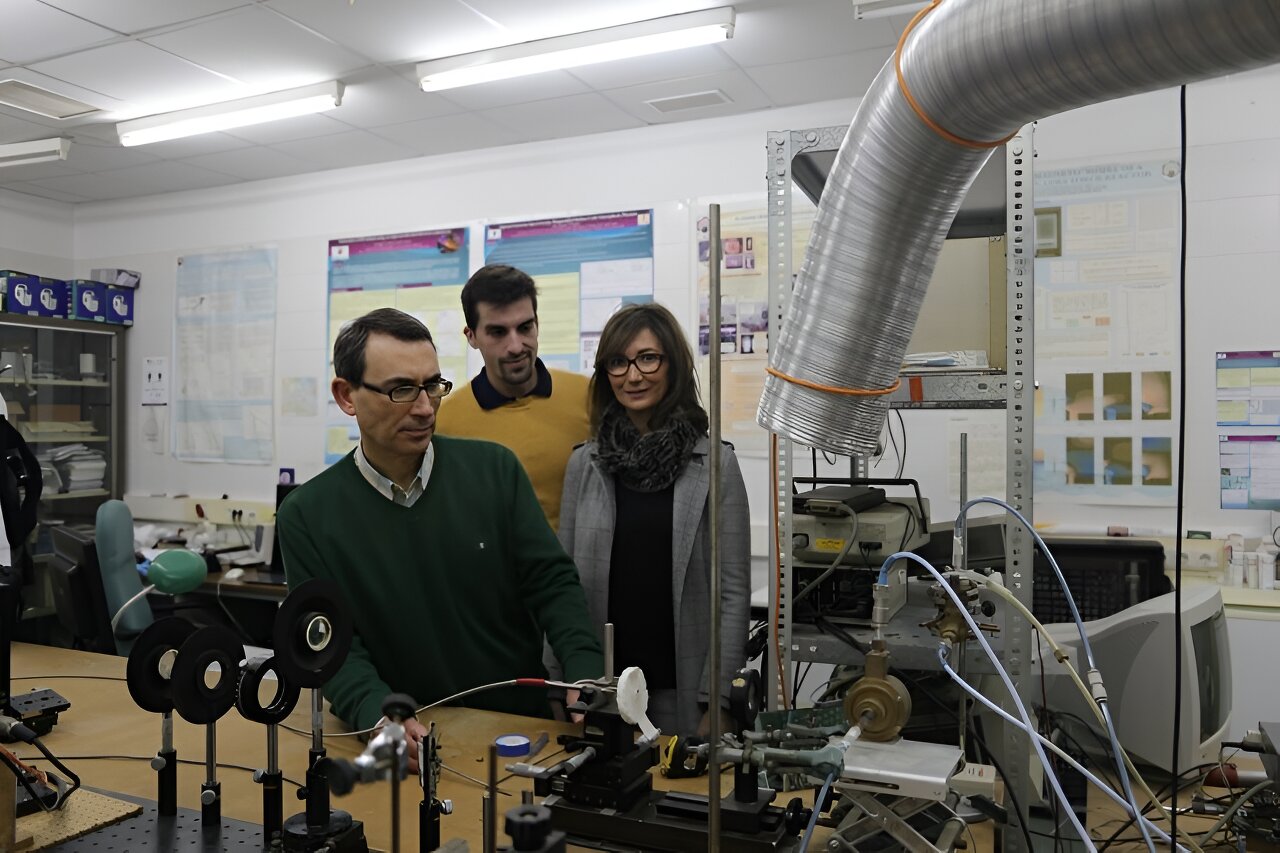Plasma Jet Enhances Water Decontamination with Improved Design

January 24, 2024
This article has undergone a review process in accordance with Science X's editorial guidelines and principles. The aspects underscored by editors to affirm the article's credibility include:
- fact-checked
- published in a peer-reviewed journal
- sourced from a reliable entity
- proofread
by the University of Córdoba
Plasma, often referred to as the fourth state of matter, is an ionized gas comprising electrons, ions, atoms, molecules, radicals, and photons. Intriguingly, it permeates everything. Artificially generated plasmas, accomplished by transmitting energy to a gas, can be found in fluorescent tubes lighting up kitchens and facilitating the continuing miniaturization of mobile phones.
The advent of plasma brought about a significant transformation in tech. Previously, etching circuits onto silicon boards used in electronic devices like mobile phones required the use of harmful chemical substances. However, through the application of plasma, this process is now more accurate and environmentally-friendly, enabling circuit slits and devices to be smaller.
However, plasma technology has other uses, such as water treatment processes. The FQM-136 Physics of Plasmas and FQM-346 Organic Catalysis and Nanostructured Materials units at the University of Córdoba joined forces on a research that sought to use plasma to facilitate chemical processes that eradicate water contaminants.
Their study is featured in the Chemosphere journal.
These researchers decided to employ plasma technology to address the growing issue of organic pollutants like colorants and other compounds from farming and industrial activities destabilizing aquatic ecosystems.
In 2017, they first demonstrated that argon plasmas stimulated by microwaves in open air could generate reactive species containing oxygen and nitrogen in water capable of decontaminating it when acted upon.
The researchers, namely Juan Amaro Gahete, Francisco J. Romero Salguero, and María C. García, have now successfully designed a reactor of this plasma type and considerable escalated the quantities of these active species produced in water. As a result, they were able to eradicate high volumes of dyes (particularly, methylene blue) in mere minutes.
This was made possible by modifying the surfatron's design, the metallic device that combines microwave energy with plasma to sustain it.
Professor María C. García explains that a small silicon piece was positioned inside the quartz discharge tube, this helps to generate a non-filamentary and more efficient plasma at interacting with water.
The components of this plasma interact with water, producing oxidizing species capable of breaking down organic compounds and eliminating microorganisms. This facilitates the use of this plasma reactor in water remediation applications.
The new design enhances the usability of this unique plasma type.
Professor García explains that the design alters the electromagnetic field's configuration created by the surfatron to produce a plasma with more efficient properties and does away with filamentation issues that destabilize it.
Then, the decontamination process begins. Professor Francisco J. Romero states that the reactive, oxidizing species produced by the plasma 'destroy the organic material present in the water.'
For the process to work, the plasma introduces remotely, resulting in the generation of reactive species, which diffuse into the liquid and eliminate contaminants, due to collisions between the excited species and molecules of oxygen, nitrogen, and water vapor in the air zone between the plasma and the water.
Researcher Juan Amaro states that the decontaminating potential of this plasma type, generated with this new design, has been proven to decrease large methylene blue dye quantities in water, yielding highly efficient results concerning energy and achieving the complete eradication of the dye within reduced processing times.
Thus with this work, progress is made on one of the applications of plasma, that 'fourth state of matter' created by providing a stable gas with energy and converting it into an ionized gas, with this being applicable to almost everything: manufacturing microchips, disinfecting surfaces, healing wounds, depositing anti-reflective coatings on glasses, improving seed germination, recovering waste, activating the surface of plastics to achieve better paint adhesion, and countless other applications.
Journal information: Chemosphere
Provided by University of Córdoba




